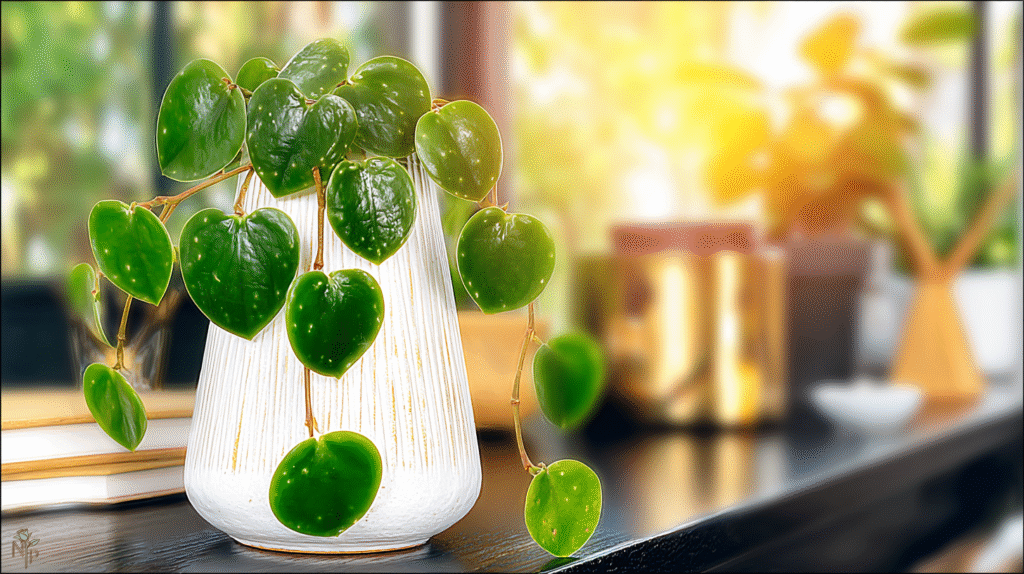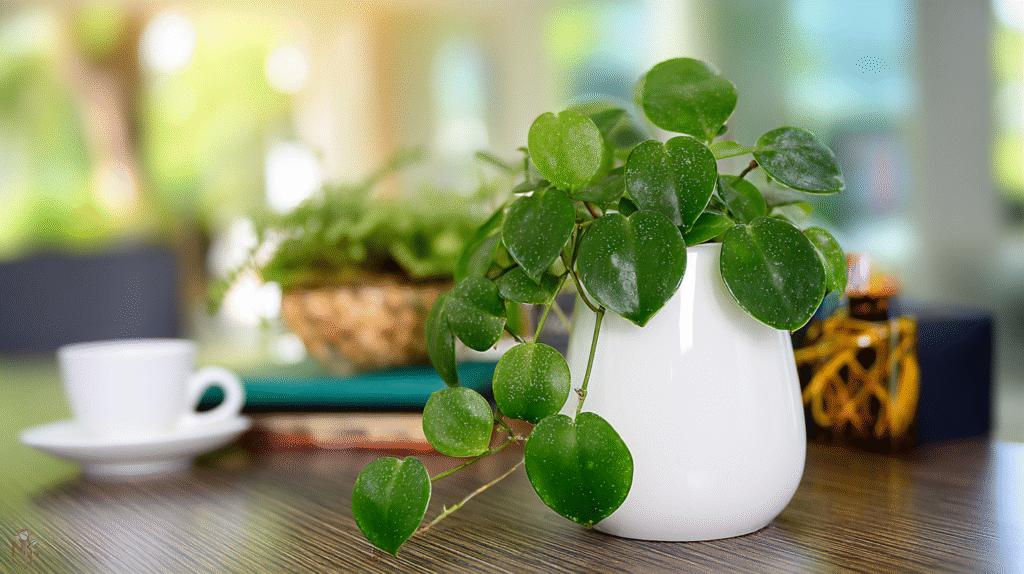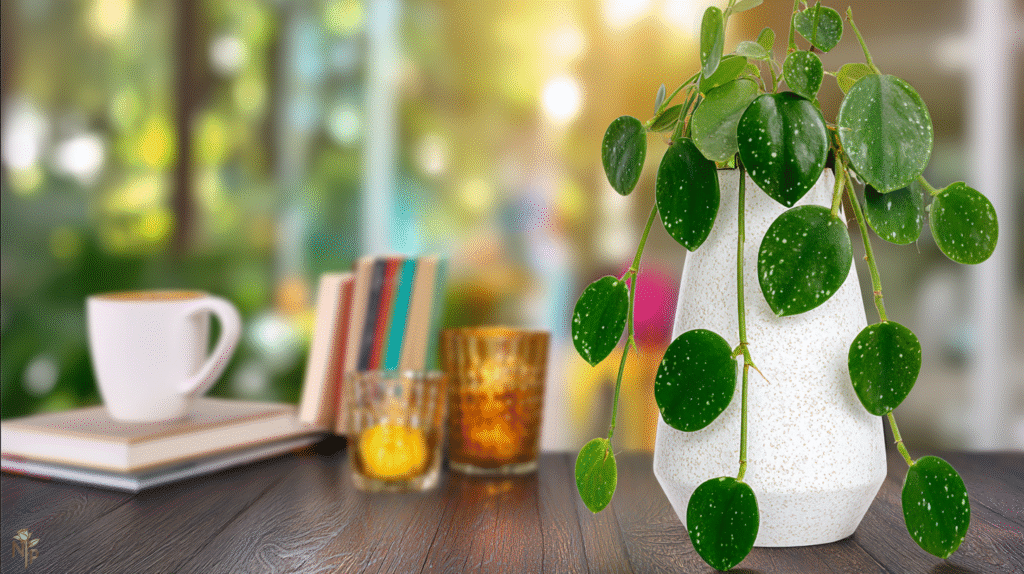Valentine’s Day 2019. I’m standing in the grocery store floral section, staring at overpriced roses that’ll be dead in a week. Then I spot it — a perfect green heart in a tiny pot. “Hoya Kerrii Sweetheart Plant” the tag says. Fifteen bucks. “This is way better than roses,” I think, grabbing one for my wife.
Plot twist: That single heart-shaped leaf is still alive five years later. Still a single leaf. No vine, no new growth, just one stubborn heart refusing to die or grow. Turns out, I’d given my wife the plant equivalent of a greeting card — cute, symbolic, but ultimately going nowhere.
That mistake launched my Hoya kerrii education. Now I give them properly (with stems and growth potential), and they’ve become my signature gift. Here’s why these weird heart plants make surprisingly perfect presents — once you understand what you’re actually giving.
The Two Types of Kerrii: Gift vs. Gimmick
This is crucial: Not all Hoya kerrii are created equal. There’s a massive difference between what most stores sell and what makes an actual gift.
The Single Leaf (What I bought):
- Just one heart-shaped leaf rooted in soil
- No stem node = no growth potential
- Stays alive for years but never grows
- Basically a living decoration
- Usually $10-20
The Real Plant:
- Multiple leaves on a vine
- Has stem nodes for growth
- Will actually become a trailing plant
- Costs more but worth it
- Usually $25-60
That first Valentine’s gift? My wife still has it on her desk. We call it “The Eternal Heart.” It’s sweet, but I’ve since given her an actual growing kerrii that’s now a 4-foot vine. Learn from my mistake — if you’re giving a plant gift, give an actual plant.
Why Kerrii Makes People Remember You
Unlike flowers that die or generic houseplants that blend in, Hoya kerrii sticks in people’s minds:
The shape factor: Hearts are universal. Everyone immediately gets the symbolism. My boss has one on her desk — two years later, she still mentions it in meetings. “Look, my heart plant has a new leaf!”
The durability: These things are tanks. My mom, who kills cacti, has kept hers alive for three years. They tolerate neglect better than they tolerate overcare.
The conversation starter: Nobody has these randomly. When someone has a kerrii, there’s always a story. “My daughter gave it to me when…” “My best friend brought this back from…” They become memory anchors.
The slow surprise: Real kerrii grow slowly, making each new leaf an event. My sister texts me photos every time hers produces a new heart. It’s like a gift that keeps giving tiny surprises.
Perfect Recipients for Kerrii Gifts
Through trial and error (mostly error), I’ve learned who appreciates these plants:
Winners:
- Office workers (thrives under fluorescent lights)
- Minimalists (one striking plant > cluttered collection)
- Anyone who travels (drought-tolerant)
- People who appreciate symbolism
- Plant beginners who need confidence
Maybe reconsider for:
- Impatient people (growth is SLOW)
- Those expecting flowers (rare indoors)
- People with plant-eating pets (toxic)
- Anyone who overwaters everything
My accountant friend who travels constantly? Perfect kerrii recipient. My nephew who wants instant gratification? Got him a pothos instead.

The Occasions That Work Best
Valentine’s Day: Obviously. But get the growing version unless you want to give a permanent valentine.
Anniversaries: The slow, steady growth mirrors relationships. Cheesy? Yes. Do people love it? Also yes.
Friendship gifts: Less romantically loaded than roses, more meaningful than random plants.
Congratulations: New job, new home, new anything. The heart shape says “I’m happy for you” without words.
Sympathy: Sounds weird, but hear me out. A living heart that persists through anything? I gave one to a friend after her divorce. She said it reminded her that love continues in different forms.
How to Present Kerrii Like You Know What You’re Doing
The pot upgrade: Those nursery pots are ugly. I keep a stash of simple white ceramic pots. Instantly elevates the gift.
The explanation card: I include a small card explaining the difference between single leaves and growing plants. Prevents confusion and shows you put thought into it.
The care instructions:
Simple version:
- Water when dry (every 2-3 weeks)
- Bright indirect light
- Ignore it mostly
- New leaves are slow but worth waiting for
The growth expectation talk: “Don’t expect changes for maybe 6 months. Then one day — boom, new heart!” Setting realistic expectations prevents disappointment.
Care Tips That Keep Your Gift Alive
The beauty of kerrii? They’re almost impossible to kill if you understand one thing: they want to be ignored.
Watering: When soil is completely dry. Then drench it. Then ignore for weeks. Overwatering is the only real danger.
Light: Bright indirect is ideal, but they tolerate less. My office one lives under fluorescents and still grows.
Soil: Well-draining. Cactus mix works great. They hate wet feet.
Temperature: Normal house temps. Don’t overthink it.
Fertilizer: Maybe once in spring/summer. Or don’t. They don’t care much.
The friend who killed every plant I gave her? Her kerrii is thriving two years later. She waters it “whenever I remember, which isn’t often.” Perfect kerrii care.

The Varieties That Make Better Gifts
Classic Green: Most common, most affordable, most foolproof. Start here.
Variegated (cream edges): Stunning but needs more light. For people with bright windows.
Reverse Variegated: Yellow centers with green edges. Rare, expensive, showstopping. For special occasions.
‘Splash’: Random silver markings. Each leaf unique. For people who appreciate quirky.
I stick to classic green for most gifts. Save the fancy varieties for plant people who’ll appreciate the rarity.
Success Stories That Keep Me Gifting
The multiplication miracle: Gave my aunt a two-leaf kerrii. Three years later, she has a 6-foot vine that’s produced four baby plants. She’s now the family kerrii dealer.
The office champion: Coworker’s desk kerrii became department mascot. People check for new leaves like it’s a community project. Best $30 team-building ever.
The long-distance friendship: Sent one to my college roommate. We text “heart plant updates” monthly. Silly? Yes. But we talk more now than we have in years.
The surprise bloom: My three-year-old gift to grandma actually bloomed. Tiny, weird flowers that smell like chocolate. She called it a miracle. (It kind of was — indoor blooming is rare.)
Why I’ll Never Go Back to Cut Flowers
Cut flowers are temporary. Generic houseplants are forgettable. But kerrii? They’re permanent without being demanding, symbolic without being cheesy (okay, a little cheesy), and they create ongoing connections.
Every kerrii I’ve given is still alive. That’s a 100% survival rate across different recipients with varying plant skills. Try getting those odds with orchids.
Plus, there’s something perfect about giving a heart-shaped plant that’s nearly indestructible. It says “my affection for you is low-maintenance but enduring.” Which, honestly, is the best kind of affection.
Your Kerrii Gift-Giving Checklist
- Buy the vine version, not single leaves
- Upgrade the pot
- Include care instructions
- Set growth expectations
- Choose recipients who appreciate slow rewards
- Remember: less care is more care
That grocery store kerrii I bought five years ago? Still sitting on my wife’s desk, still a single heart, still making us smile. But the vined one I gave her later? That’s the one creating new hearts, building memories, and reminding us that the best gifts grow slowly.
Just maybe check if they already have one first. I’ve accidentally given the same person two kerrii. Awkward, but hey — now they have double the hearts. 💚







